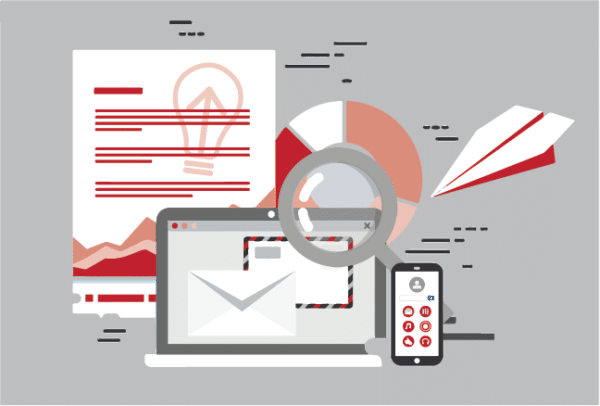Is Email Marketing still relevant?
The eternally climbing number: your email inbox. From newsletters to different sales emails offering 30 percent-off coupons, marketing-centered emails seem to continually clutter our inbox, and sorting through them has become one of the routine activities people engage in every day.
In an age where the rapid rise of social media has seemingly grabbed the spotlight as the #1 marketing tool of today, email marketing is still a powerhouse among the marketer’s toolbelt. If you believe that email marketing is dead and buried, think again.
Email is alive and well
Email marketing has been around for several decades. And, while numerous new marketing channels have since evolved, email continues to deliver the highest return on investment–$42 back for every dollar spent, according to Forbes. Furthermore, automated email marketing may help you improve sales conversions by 14 percent.
Email remains an important part of any business strategy, however, content and timing determine its overall effectiveness.
Content should be personalized with information your clients want to know more about, such as new product or service launches, special pricing and updates of interest to them. Above all else, your emails should provide value in a way that is both informative and engaging.
“The most effective (email) marketing strategies adapt, grow and innovate,” says Rieva Lesonsky, Contributing Writer at Forbes. “They are personal, targeted and crafted with the customers’ objectives and objections in mind.”
When it comes to timing, studies suggest that B2B emails for office employees are best sent mid-week around 10 am. Entrepreneurs and executives, however, open emails more frequently so the day of the week matters less. Interestingly, 10 am on a Saturday is the best time to reach these individuals based on open and click rates. Clearly, knowing your target audience or ‘buyer persona’ is critical to determining the best time to send your emails.
“When you check email in the morning, there is a long list and sometimes you just want to get through them and delete, move or ignore most of them,” states Marialuisa Curran, Lead Marketer, Marketing Direction. “I recommend a later send so your email isn’t caught in the pile-up but rather is sent as a new message later in the morning or afternoon.”
You cannot market what you cannot measure!
So, how do you find out if your email marketing is working? Are people reading the information you are providing and are they taking action by contacting you with questions, scheduling an appointment or making a purchase? The answers can be found by looking at open rates and click-through rates.
The open rate measures the percentage of recipients who opened your email, which helps you gauge the performance of your subject line and preview. Your click-through rate measures the percentage of recipients who clicked on the links in your email against the total number of subscribers who received the email.
According to statistics compiled this year by Smart Insights, the average open rate across all industries is 16.97 percent with an average click-through rate of 10.29 percent.
Tips to improve open rates
The best way to determine what works and doesn’t work in your email marketing is by testing different subject lines and content….and then testing again. In other words, it’s an ongoing process.
“There are no hard and fast rules as industries vary, which is what makes customization and testing so critical,” Marialuisa says. “Insight into your own customers and prospects will improve open rates and engagement.”
Most email marketing tools allow for A/B testing where you can improve open rates by testing the same email in two different ways. Try one content approach vs. another, or try one with a graphic design vs. plain text, or try one offer vs. another offer. The tools will illustrate which test performed better.
Marialuisa also suggests the following tips:
- Subject lines. You are NOT too professional for emojis! Be light, be funny, be human. Use a smiley even if you’re an attorney!
- Keep subject lines short (obviously).
- List the benefit. Always think of what’s in it for them. What does your new product or service mean to your prospect?
- Content. Quit the form! If you are sending to your database, you can track their interaction (opens, clicks, downloads), so you should not be sending those leads to landing pages with forms.
- Let the content open automatically. In fact, un-gate a lot of your content as more and more leads will bounce if they feel they need to give their personal information before they want to.
- Automate. Set up those thank-you emails, follow-up emails and web-form emails! You can still be personal and check in with prospects, but it helps if you have some automatic notices in place that keep you top of mind. Be careful not to over-automate as there’s nothing more annoying than receiving something you’ve asked not to receive or that has nothing to do with you specifically.
- Frequency. Be present but not pestering. Once a week or every other week is good if you truly have something to offer or share. Monthly is good if you have big messages and don’t want to inundate your audience (especially those with longer sales cycles). Newsletters are always a great way to share and be present without being invasive.
- Quality over quantity. Less is more — if they are better leads, they will stay on the subscribe list. If they want to be removed, they probably weren’t going to buy from you anyway. If you email them too much, they will remove themselves from your list even when they may have actually wanted to buy from you in the future. Find a good middle ground.


